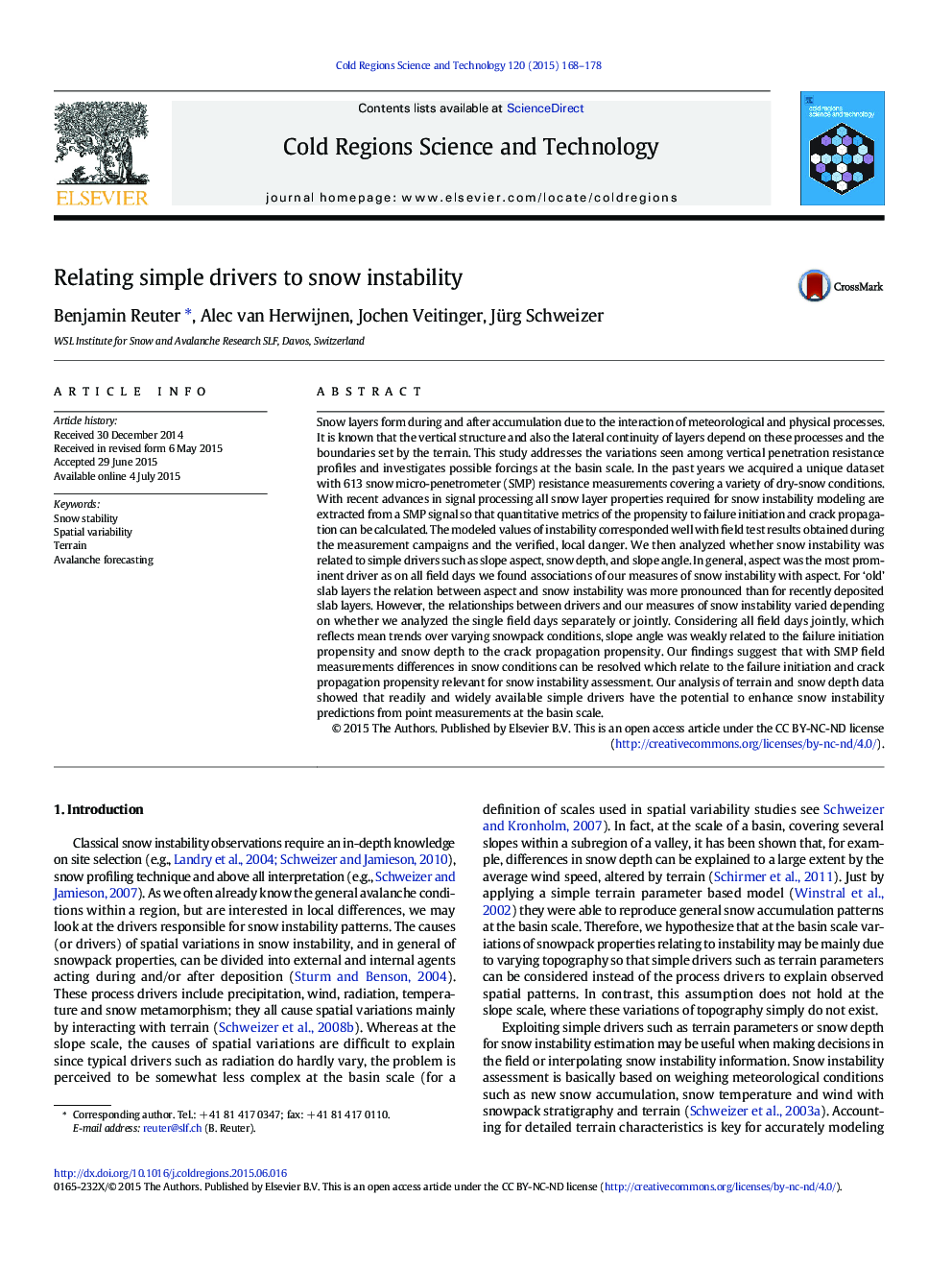| Article ID | Journal | Published Year | Pages | File Type |
|---|---|---|---|---|
| 6426722 | Cold Regions Science and Technology | 2015 | 11 Pages |
â¢Snow instability was derived from snow micro-penetrometer in basin scale field campaigns.â¢Variations of failure initiation and crack propagation propensity were identified.â¢Terrain and snow depth variations partly explained instability distributions.â¢Simple drivers qualify for enhancing snow instability interpolation.
Snow layers form during and after accumulation due to the interaction of meteorological and physical processes. It is known that the vertical structure and also the lateral continuity of layers depend on these processes and the boundaries set by the terrain. This study addresses the variations seen among vertical penetration resistance profiles and investigates possible forcings at the basin scale. In the past years we acquired a unique dataset with 613 snow micro-penetrometer (SMP) resistance measurements covering a variety of dry-snow conditions. With recent advances in signal processing all snow layer properties required for snow instability modeling are extracted from a SMP signal so that quantitative metrics of the propensity to failure initiation and crack propagation can be calculated. The modeled values of instability corresponded well with field test results obtained during the measurement campaigns and the verified, local danger. We then analyzed whether snow instability was related to simple drivers such as slope aspect, snow depth, and slope angle. In general, aspect was the most prominent driver as on all field days we found associations of our measures of snow instability with aspect. For 'old' slab layers the relation between aspect and snow instability was more pronounced than for recently deposited slab layers. However, the relationships between drivers and our measures of snow instability varied depending on whether we analyzed the single field days separately or jointly. Considering all field days jointly, which reflects mean trends over varying snowpack conditions, slope angle was weakly related to the failure initiation propensity and snow depth to the crack propagation propensity. Our findings suggest that with SMP field measurements differences in snow conditions can be resolved which relate to the failure initiation and crack propagation propensity relevant for snow instability assessment. Our analysis of terrain and snow depth data showed that readily and widely available simple drivers have the potential to enhance snow instability predictions from point measurements at the basin scale.
